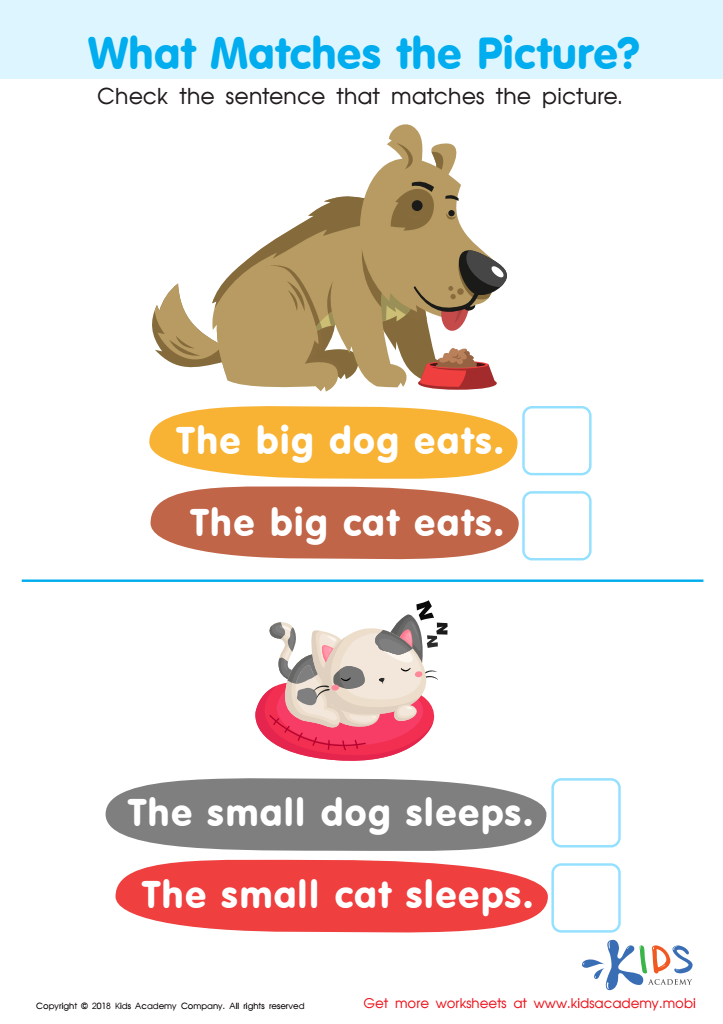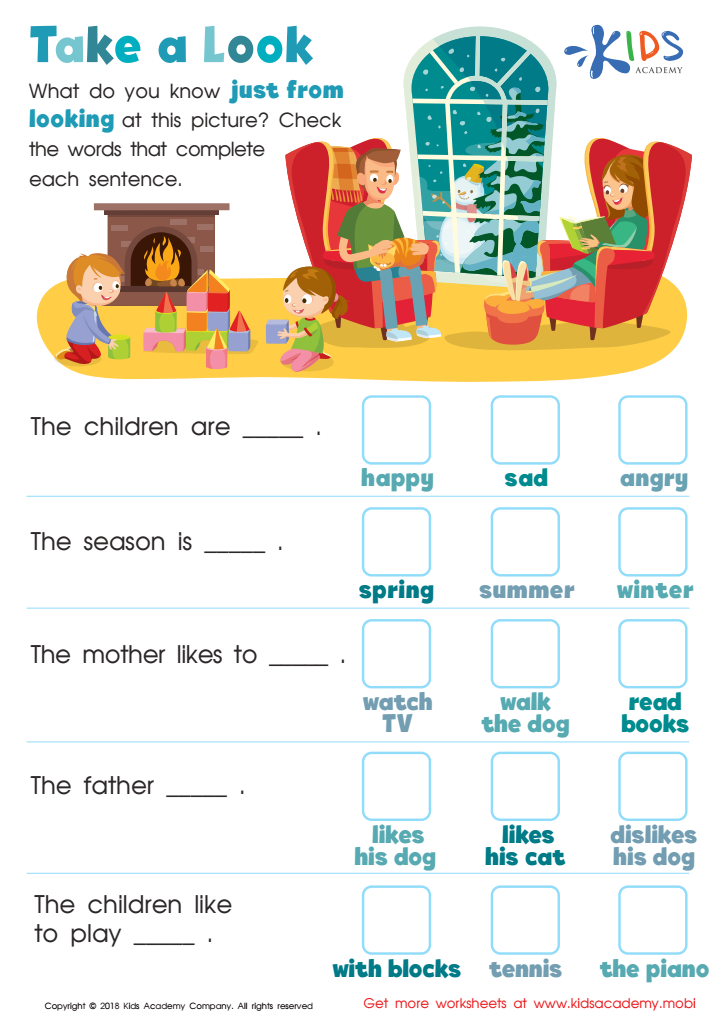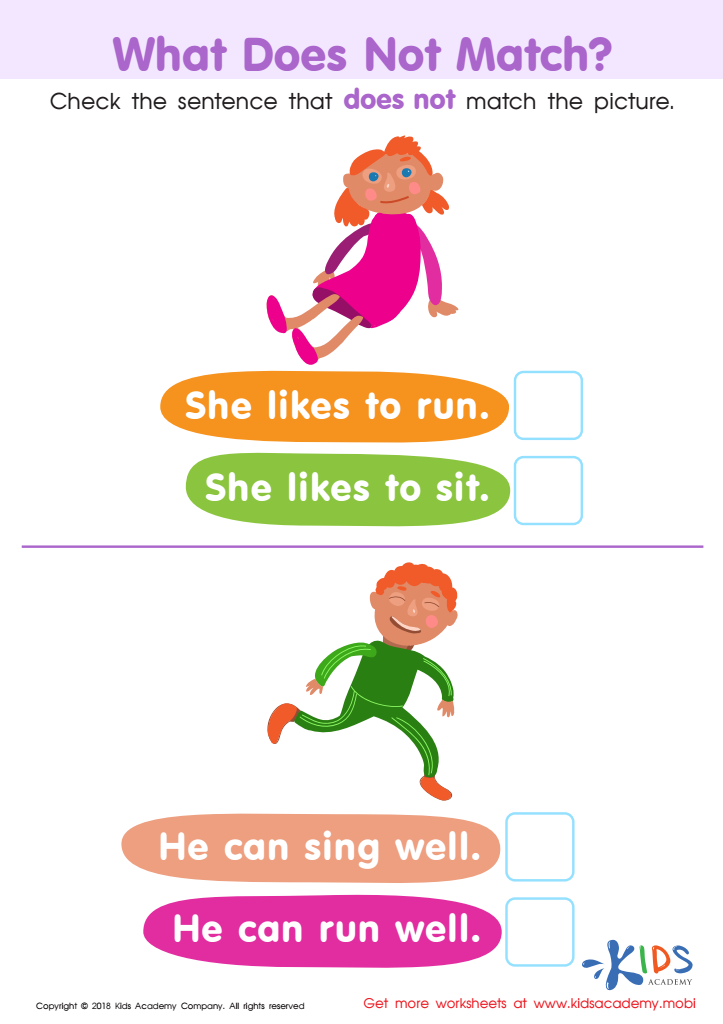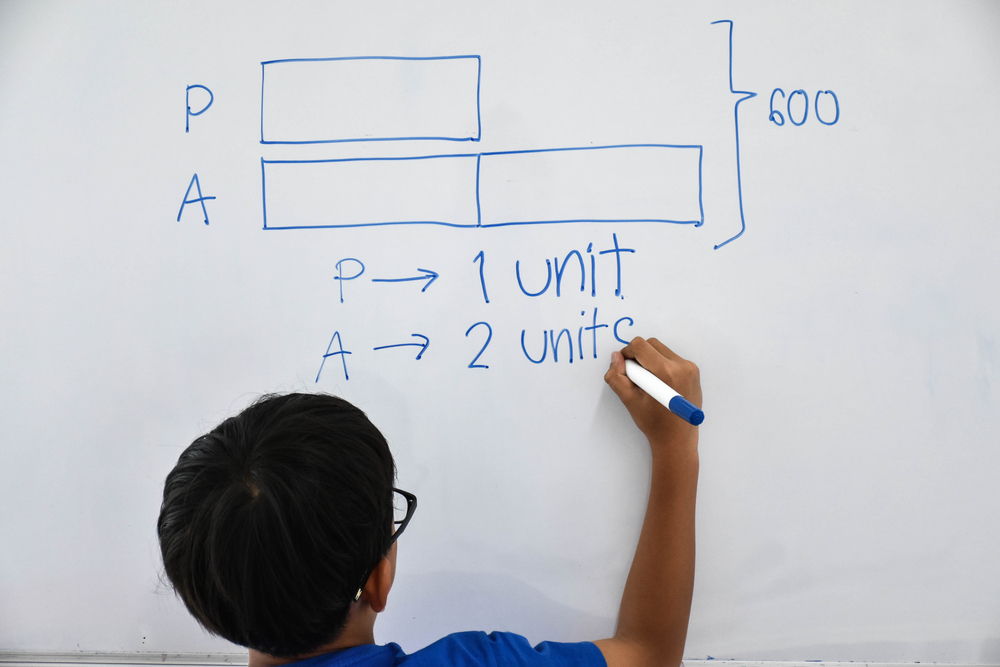Shape Recognition Reading Comprehension Worksheets for Ages 5-6
3 filtered results
-
From - To
Explore our engaging Shape Recognition Reading Comprehension Worksheets designed for young learners aged 5-6! These worksheets promote early literacy skills while introducing basic geometric shapes such as circles, squares, and triangles. Each activity combines reading comprehension with fun, interactive exercises that challenge children to identify shapes in various contexts. Perfectly aligned with educational standards, these resources enhance vocabulary, critical thinking, and shape recognition abilities. Ideal for both classroom and home use, our worksheets ensure your students build a strong foundation in reading and understanding shapes. Start your little ones on the path to effective learning with our exciting, colorful worksheets today!


What Matches the Picture? Worksheet


Take a Look - Part 1 Worksheet


What Does Not Match? Worksheet
Shape recognition is a foundational skill that significantly contributes to reading comprehension for young learners aged 5-6. At this developmental stage, children are not only expanding their vocabulary but also learning to decode and understand new concepts. Recognizing shapes plays a crucial role in their ability to identify letters and words, as many letters are composed of simple geometric shapes.
When parents and teachers support shape recognition, they foster visual literacy, which enables children to make connections between visual stimuli and the written word. For instance, recognizing a square can help them identify the letter "O" or understand the structure of a story since many illustrations accompany texts. Furthermore, many educational resources, such as picture books and games, integrate shape recognition activities that enhance comprehension skills in an engaging way.
Moreover, shape recognition encourages critical thinking and problem-solving skills. Children begin to categorize and differentiate between shapes, which parallels the skills required to make inferences and draw conclusions during reading. By cultivating shape recognition through playful learning, adults help children develop a solid foundation for future reading success, making it essential for parents and teachers to prioritize this activity in their educational practices.
 Assign to My Students
Assign to My Students
















